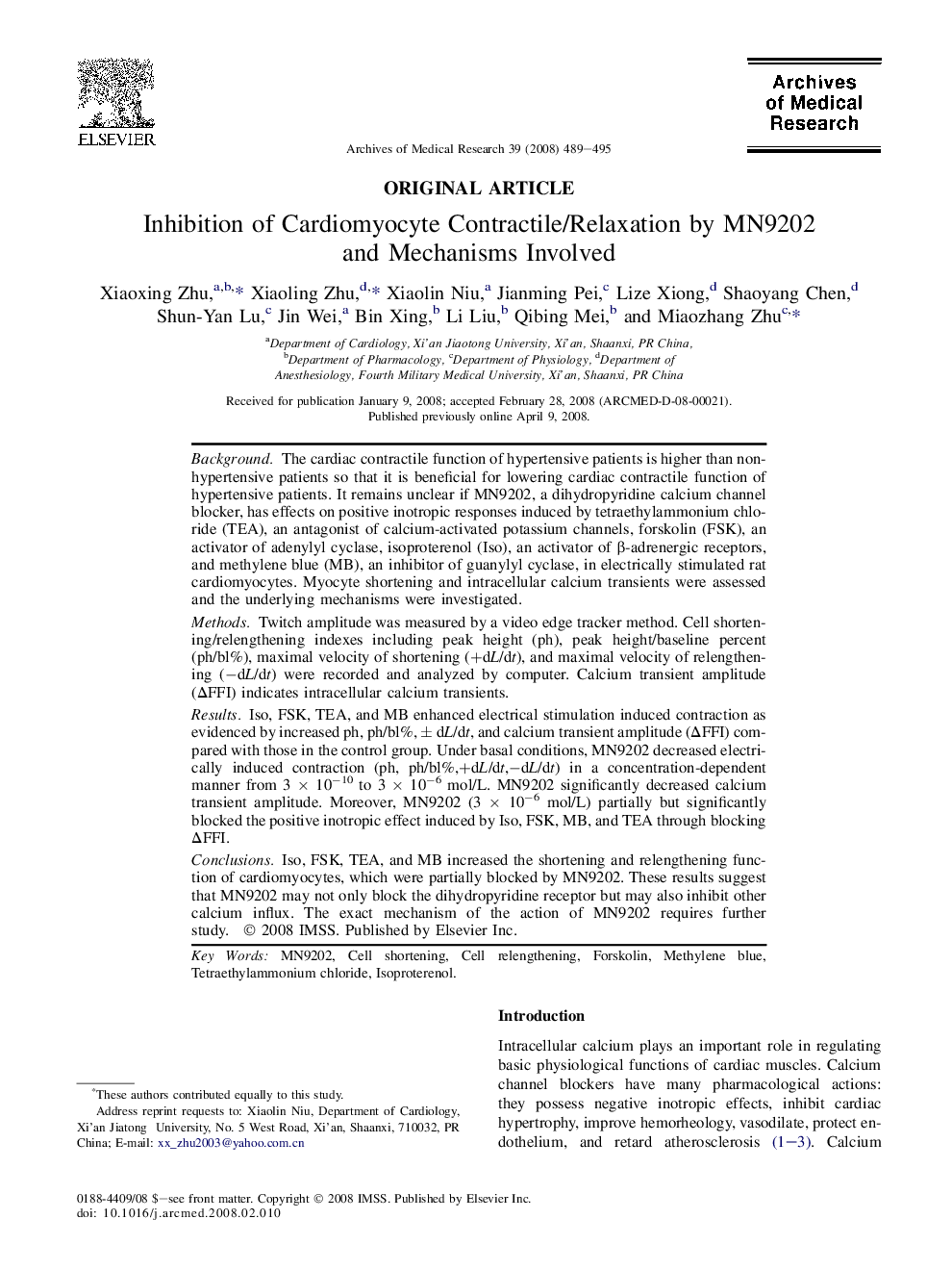| Article ID | Journal | Published Year | Pages | File Type |
|---|---|---|---|---|
| 3447737 | Archives of Medical Research | 2008 | 7 Pages |
BackgroundThe cardiac contractile function of hypertensive patients is higher than non-hypertensive patients so that it is beneficial for lowering cardiac contractile function of hypertensive patients. It remains unclear if MN9202, a dihydropyridine calcium channel blocker, has effects on positive inotropic responses induced by tetraethylammonium chloride (TEA), an antagonist of calcium-activated potassium channels, forskolin (FSK), an activator of adenylyl cyclase, isoproterenol (Iso), an activator of β-adrenergic receptors, and methylene blue (MB), an inhibitor of guanylyl cyclase, in electrically stimulated rat cardiomyocytes. Myocyte shortening and intracellular calcium transients were assessed and the underlying mechanisms were investigated.MethodsTwitch amplitude was measured by a video edge tracker method. Cell shortening/relengthening indexes including peak height (ph), peak height/baseline percent (ph/bl%), maximal velocity of shortening (+dL/dt), and maximal velocity of relengthening (−dL/dt) were recorded and analyzed by computer. Calcium transient amplitude (ΔFFI) indicates intracellular calcium transients.ResultsIso, FSK, TEA, and MB enhanced electrical stimulation induced contraction as evidenced by increased ph, ph/bl%, ± dL/dt, and calcium transient amplitude (ΔFFI) compared with those in the control group. Under basal conditions, MN9202 decreased electrically induced contraction (ph, ph/bl%,+dL/dt,−dL/dt) in a concentration-dependent manner from 3 × 10−10 to 3 × 10−6 mol/L. MN9202 significantly decreased calcium transient amplitude. Moreover, MN9202 (3 × 10−6 mol/L) partially but significantly blocked the positive inotropic effect induced by Iso, FSK, MB, and TEA through blocking ΔFFI.ConclusionsIso, FSK, TEA, and MB increased the shortening and relengthening function of cardiomyocytes, which were partially blocked by MN9202. These results suggest that MN9202 may not only block the dihydropyridine receptor but may also inhibit other calcium influx. The exact mechanism of the action of MN9202 requires further study.
